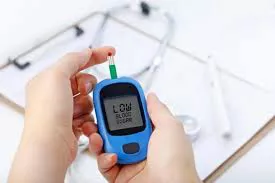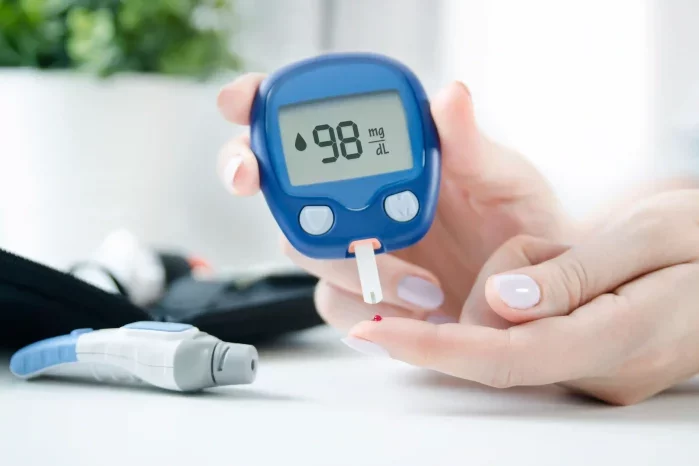Hyperglycemia, or high blood sugar, is a condition that occurs when there is too much glucose in the blood. It is a common issue for individuals with diabetes, particularly those with type 1 and type 2 diabetes. Managing hyperglycemia is crucial to prevent both short-term and long-term complications, such as diabetic ketoacidosis, cardiovascular diseases, and neuropathy. This article delves into effective strategies to calm down hyperglycemia, providing a comprehensive guide for healthcare professionals and patients alike.
Understanding Hyperglycemia
Hyperglycemia is defined by blood glucose levels higher than 130 mg/dL (7.2 mmol/L) when fasting or higher than 180 mg/dL (10 mmol/L) two hours after meals. It can result from various factors, including inadequate insulin production, resistance to insulin, dietary choices, stress, illness, and certain medications.
Immediate Actions to Reduce Blood Sugar Levels
Monitor Blood Glucose Levels
Regular monitoring of blood glucose levels is essential to manage hyperglycemia effectively. Patients should use a glucometer to check their blood sugar levels multiple times a day, especially if they suspect hyperglycemia.
Frequency: Depending on the individual’s condition, blood glucose levels should be checked before and after meals, before and after exercise, and at bedtime.
Recording Results: Keeping a log of blood glucose readings helps identify patterns and triggers for hyperglycemia.
Insulin Administration
For individuals with type 1 diabetes and some with type 2 diabetes, administering insulin is a primary method to lower high blood sugar levels.
Rapid-Acting Insulin: Injecting rapid-acting insulin can help quickly reduce blood glucose levels. It typically starts working within 15 minutes and peaks around one hour.
Dosage Adjustments: It is important to follow the prescribed insulin regimen and adjust dosages based on blood glucose readings and carbohydrate intake.
Hydration
Drinking water can help flush out excess glucose through urine and prevent dehydration, a common complication of hyperglycemia.
Water Intake: Encourage patients to drink plenty of water throughout the day, especially if they have high blood sugar levels.
Avoid Sugary Drinks: Sugary beverages can worsen hyperglycemia and should be avoided.
Long-Term Strategies to Manage Hyperglycemia
Dietary Modifications
A balanced diet is crucial for maintaining stable blood glucose levels. Patients should focus on consuming nutrient-dense foods that have a minimal impact on blood sugar.
Low-Glycemic-Index Foods: Foods with a low glycemic index (GI) cause slower rises in blood glucose levels. Examples include whole grains, legumes, non-starchy vegetables, and most fruits.
Portion Control: Eating smaller, more frequent meals can help maintain steady blood sugar levels. Avoid large meals that can cause spikes in glucose.
Carbohydrate Counting: Understanding the carbohydrate content of foods and managing carbohydrate intake can help control blood sugar levels. Patients should work with a dietitian to develop a personalized meal plan.
Regular Physical Activity
Exercise helps lower blood glucose levels by increasing insulin sensitivity and promoting glucose uptake by muscles.
Aerobic Exercise: Activities such as walking, swimming, and cycling can help reduce blood sugar levels and improve overall health.
Strength Training: Resistance exercises like weight lifting enhance muscle mass, which can improve glucose uptake.
Consistency: Regular, moderate-intensity exercise is more beneficial than occasional high-intensity workouts. Aim for at least 150 minutes of moderate aerobic activity per week.
Medications
In addition to insulin, other medications can help manage hyperglycemia in individuals with diabetes.
Metformin: This oral medication decreases glucose production in the liver and improves insulin sensitivity.
Sulfonylureas: These drugs stimulate the pancreas to produce more insulin.
DPP-4 Inhibitors: These medications help increase insulin production and decrease glucose production.
SGLT2 Inhibitors: These drugs help the kidneys remove excess glucose from the blood through urine.
Stress Management
Stress can trigger the release of hormones that increase blood glucose levels. Effective stress management techniques can help keep blood sugar levels stable.
Mindfulness and Meditation: Practices such as mindfulness meditation can reduce stress and improve blood glucose control.
Exercise: Physical activity is an excellent way to reduce stress and improve overall health.
Support Systems: Encourage patients to seek support from friends, family, or support groups to help manage stress.
Adequate Sleep
Poor sleep can affect blood sugar levels and insulin sensitivity. Ensuring adequate and quality sleep is an important aspect of managing hyperglycemia.
Sleep Hygiene: Encourage practices such as maintaining a regular sleep schedule, creating a comfortable sleep environment, and avoiding caffeine and electronics before bedtime.
Address Sleep Disorders: Conditions such as sleep apnea can worsen blood glucose control and should be treated.
Medical Interventions and Monitoring
Regular Medical Check-Ups
Routine visits to healthcare providers are essential for managing hyperglycemia and preventing complications.
HbA1c Tests: This test measures average blood glucose levels over the past two to three months and helps assess long-term glucose control. Aim for an HbA1c level below 7% for most adults with diabetes.
Lipid Profile and Blood Pressure Monitoring: Regularly check cholesterol levels and blood pressure to manage cardiovascular risk factors associated with diabetes.
Continuous Glucose Monitoring (CGM)
CGM devices provide real-time blood glucose readings and trends, helping patients and healthcare providers make informed decisions about diabetes management.
Advantages: CGM can detect patterns and trends in blood glucose levels, alerting patients to hyperglycemia or hypoglycemia in real-time.
Integration with Insulin Pumps: Some CGM systems can be integrated with insulin pumps to provide automatic insulin delivery adjustments.
Addressing Underlying Causes
Infection and Illness Management
Illness and infections can cause temporary increases in blood glucose levels. It is important to manage these conditions promptly.
Sick Day Management Plans: Patients should have a plan for managing their diabetes when they are ill, including guidelines for monitoring blood glucose, adjusting medications, and staying hydrated.
Antibiotics and Antivirals: Treat infections promptly with appropriate medications as prescribed by a healthcare provider.
Medication Review
Certain medications, such as corticosteroids and some psychiatric drugs, can increase blood glucose levels. Regular review and adjustment of these medications may be necessary.
Alternative Medications: Consider switching to medications that have a lesser impact on blood glucose levels, if possible.
Close Monitoring: Increase the frequency of blood glucose monitoring when starting new medications known to affect blood sugar levels.
Patient Education and Empowerment
Self-Management Education
Educating patients about diabetes self-management is crucial for effective hyperglycemia control.
Diabetes Education Programs: Encourage participation in structured diabetes education programs to learn about diet, exercise, medication management, and monitoring.
Customized Plans: Work with patients to develop individualized diabetes management plans that consider their lifestyle, preferences, and goals.
Technology and Tools
Utilizing technology can enhance diabetes management and improve outcomes.
Mobile Apps: Many apps can help patients track their blood glucose levels, diet, and physical activity.
Telehealth: Virtual visits with healthcare providers can provide ongoing support and adjustments to diabetes management plans.
See also:What’s Reactive Hyperglycemia
Conclusion
Managing hyperglycemia requires a comprehensive approach that includes immediate actions, long-term strategies, medical interventions, and patient education. Monitoring blood glucose levels, administering insulin, and staying hydrated are crucial for quickly reducing high blood sugar levels. Long-term management involves dietary modifications, regular physical activity, medication adherence, stress management, and adequate sleep.
Regular medical check-ups, continuous glucose monitoring, and addressing underlying causes such as infections and medication effects are essential components of effective hyperglycemia management. Empowering patients through education and utilizing technology can further enhance diabetes self-management.
By adopting a multifaceted approach, healthcare professionals and patients can work together to calm down hyperglycemia, improve overall health, and prevent complications associated with high blood sugar levels.
Related topics:
What Is Type 2 Diabetes with Hyperglycemia?



























